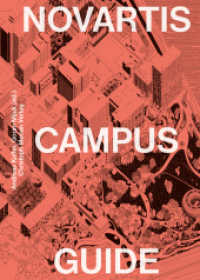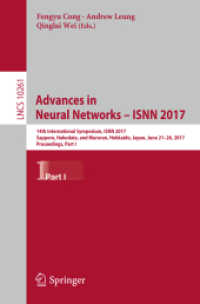- ホーム
- > 洋書
- > 英文書
- > Computer / General
Full Description
Modern day networking and computing systems rely increasingly on knowing the location of the user. These include state-of-the art technologies such as navigation of vehicles and robots, traffic planning, or light control in smart home environments. In the future, even more services will appear. The predominant localization technology currently uses satellite signals but this only works outdoors, is expensive, and consumes considerable power. Alternative localization technologies have been recently developed using optical, ultra-sound, or radar techniques. All of these require additional hardware components to work effectively. Radio-frequency (RF) localization is a technique that uses communication signals to perform the task without the need for any extra hardware. This monograph addresses the role of synchronization in radio localization and provides a comprehensive overview of recent developments suitable for current and future practical implementations. The material is intended for both theoreticians and practitioners and is written to be accessible to novices while covering state-of-the-art topics of interest to advanced researchers of localization and synchronization systems.
Contents
1. Introduction 2. Synchronization for Localization 3. Basic Models 4. Network Inference Approaches 5. Two-step Approaches: Localization after Synchronization 6. Single-step Approaches: Synchronization and Localization 7. Conclusions and Further Problems. References.








